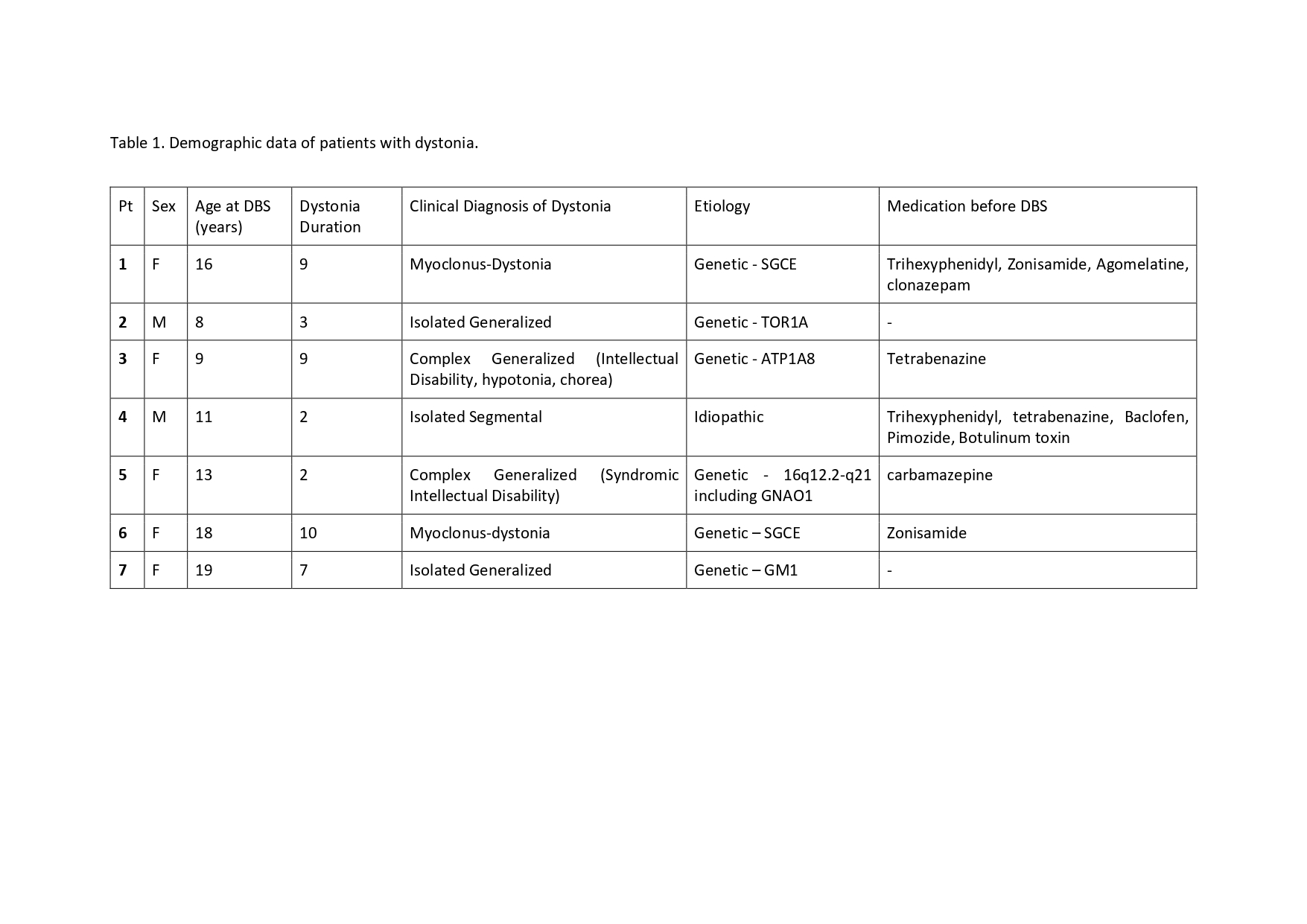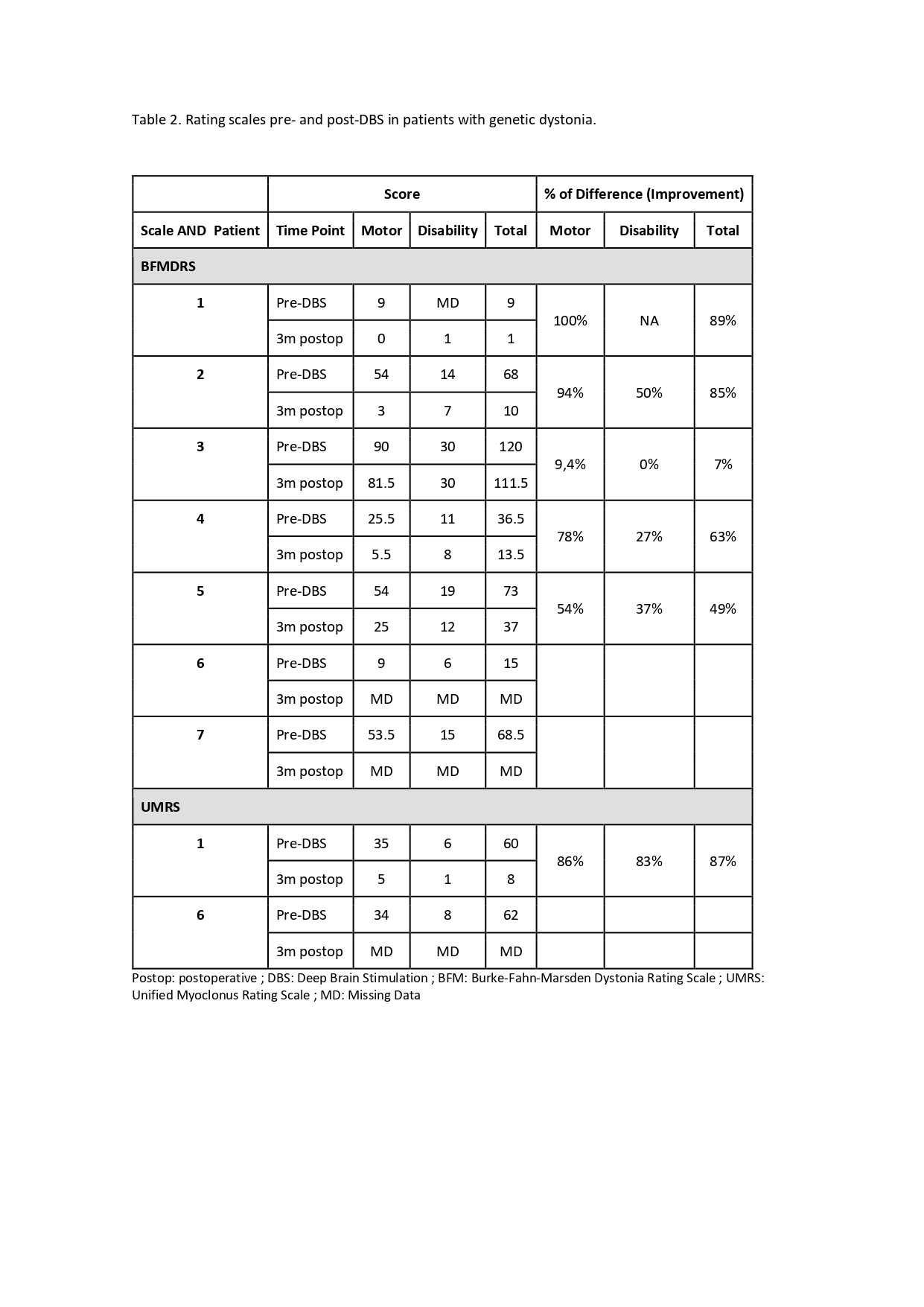Objective: To evaluate the efficacy and safety of Globus Pallidus Internus deep brain stimulation (GPi-DBS) in children with different forms of monogenic dystonia operated by a Paediatric Neuromodulation Unit.
Background: In children with hereditary dystonia, clinical characteristics, time at surgery and the genetic etiology are important predictors of GPi-DBS efficacy.
Method: In seven paediatric patients with hereditary dystonia, bilateral directional electrodes were inserted in the GPi using a Leksell® Vantage™ stereotactic guide and electrophysiological recording. Electrodes were connected to the Vercise Genus™rechargeable generator. Accuracy of stimulating electrode placement was determined by CT/MRI fusion using Brainlab Elements Stereotaxy software. Patients were evaluated pre and post-surgery using clinical scales.
Results: DBS was performed at 13 [9-19] years, after 5 [2-10] years of dystonia onset. Patients diagnosis were isolated dystonia (TOR1A, GLB1 genes), myoclonus-dystonia (SGCE gene) and dystonia in combination with other neurological symptoms (GNAO1, ATP8A2 genes). The mean error ± SD for electrode placement was X-axis 0.23 ± 0.61, Y-axis 0.6 ± 0.7 and Z-axis 0.18 ± 0.50. Stimulation parameters were 2.2 [1-3.3] milliamps, 60millisec, 130hertz. After 5 [1-10] months of follow-up, we observed an improvement on dystonia (67% BFM-motor; 28.5% BFM-disability) and myoclonus (87% UMRS) and thus, pharmacological treatment was reduced. In two patients, atrophic scar and scalp wound infection were satisfactory treated.
Conclusion: GPi-DBS was safe and effective in children with TOR1A, SGCE, GLB1 and GNAO1-hereditary dystonia. Our Pediatric Neuromodulation Units allowed an early intervention in these patients and an almost complete remission of symptoms in most genetic dystonia phenotypes.
To cite this abstract in AMA style:
A. Salazar Villacorta, M. Tardáguila, A. Bescós, K. Rosas, I. Delgado, L. Ispierto, R. álvarez, J. Muñoz, M. Poca, B. Pérez. Pallidal Stimulation in children with monogenic dystonia [abstract]. Mov Disord. 2021; 36 (suppl 1). https://www.mdsabstracts.org/abstract/pallidal-stimulation-in-children-with-monogenic-dystonia/. Accessed April 6, 2025.« Back to MDS Virtual Congress 2021
MDS Abstracts - https://www.mdsabstracts.org/abstract/pallidal-stimulation-in-children-with-monogenic-dystonia/


